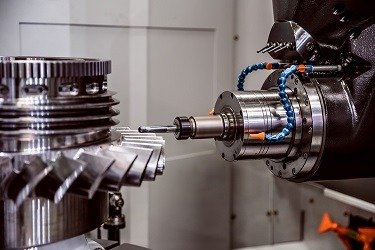CNC, Computer Numerical Control machining, is a revolutionary process in modern manufacturing and engineering industries for the production of precise parts of a complicated nature and also providing customization. Whether you are an expert in project management or not in the related field at all, you should be familiar with the trick of efficient budgeting that is key to the success of a CNC machining project. Besides the apparent expenses which involve the cost of labor and machinery that belong to the project, there are other items that can go unnoticed and can greatly affect the financial outcome of the project.
The Fundamentals of CNC Machining
CNC (Computer Numerical Control Machining) is seen as very different than traditional manual machining because of the automation which contributes to the advancements in the accuracy, speed, and regularity of the machining process. Driverless transportation has no doubt various benefits but the new issues related to cost and operation arise causing the distinction, which is very important to apprehend.
CNC machining involves various techniques such as milling, turning, drilling, and grinding. Each technique requires specialized equipment, precise tooling, and skilled operators to program and oversee the processes. These elements are essential for navigating CNC machining costs effectively. Moreover, advancements in CNC technology, like multi-axis machining and additive manufacturing, are transforming modern production. These innovations offer both challenges and opportunities, reshaping how organizations approach production, costing, and overall strategy. Thus, a comprehensive understanding of these factors is vital for making informed investment and operational decisions in the manufacturing sector.
Identifying Project Requirements
The first item on the list of priorities in budgeting a CNC machining job is determining what your own personal requirements are. This refers to the amount of items, the materials, the tolerances, and the preferred times of making. Your project cost will depend upon its complexity which will in turn be directly related to your characteristics and specifications. The next critical stage is to define the resources assessment and the financial levels. It is important to do the budget assessment beforehand so as to budget correctly during the whole machining process therefore saving various resources and completion timeline.
Machine Selection and Setup Costs
CNC machines are varied in shape, form, and size. Every machine has a customized design in accordance with its application and cost. When planning for your project, other than the acquiring machine’s purchase or rental cost, you need to incorporate the setup and installation fees costs into the total project cost. Because of continuous maintenance and calibration costs to achieve optimal operation performance within the project lifespan, be on the lookout for this.
It is imperative to factor in the cost of training for machine operators who would be handling such CNC machines. The correct training will result in a safe and efficient operation, the error risk is significantly reduced and the ability to mass produce things is increased. In the beginning, high-level training programs should become less expensive compared to the purchasing of costly equipment and machines due to the possibility of expensive wrong usage and equipment breakdown. More so, it prepares your crew for operating the CNC units at their optimum state enabling the machines to deliver the best service to you as a business.
Material Costs and Waste
Despite the fact the budgeting for CNC machining projects goes beyond the mere machining it goes to the material selection as well. Metals are the most expensive materials to use, so consider cheaper materials such as plastic or composite. Furthermore, assess if there will be a waste of material since the CNC cutting produces scrap that cannot be recycled.
Labor Costs and Programming
CNC machining is automated, but competent operators and programmers are still required for setup, monitoring, and troubleshooting. Consider the labor costs for programming the CNC machine, as well as any hand finishing or assembly required after machining. Skilled labor may come at a price, so plan appropriately to ensure you have the essential knowledge available.
One of the issues you will have to plan for is the impact of labor efficiency on your budget. This yields faster process machines since errors or moving tools affect the duration of production cycles and the operators and programmers. Employ or provide appropriate training for workers with sufficient knowledge of machine control engineering to ensure high productivity and less hefty labor costs during the implementation.
Tooling and Tool Life
CNC machining uses cutting tools to shape and polish objects, each with a limited lifespan. Plan to buy or rent these tools, as well as replace them when they wear out over time. Consider tooling expenses when determining the total cost per item, as they can have a substantial impact on your project’s profitability.
When budgeting for your CNC machining project, make sure to include tooling maintenance and optimization costs. Regular maintenance, such as sharpening tools or replacing old components, can increase tool life and assure consistent part quality. Furthermore, investing in sophisticated tooling technologies, such as coatings or high-performance inserts, can initially be more expensive, but it can result in longer tool life and shorter machining times in the long term. Prioritizing tooling optimization and maintenance in your budget will increase the efficiency and profitability of CNC machining operations.
Conclusion
Effective budgeting will affect the outcome of the machine project component. After grasping the factors that determine the principal cost components and unforeseen charges as noted in this article, you will be able to design an all-inclusive budget that accurately reflects the expected amount for your project. When planning, be sure to consider what-if scenarios, include problem-solving strategies, and place an emphasis on quality before time gets serious. Through precise analysis and procedures, one can chart their way through the complexity of the CNC machining budget and achieve cost-effectiveness.
